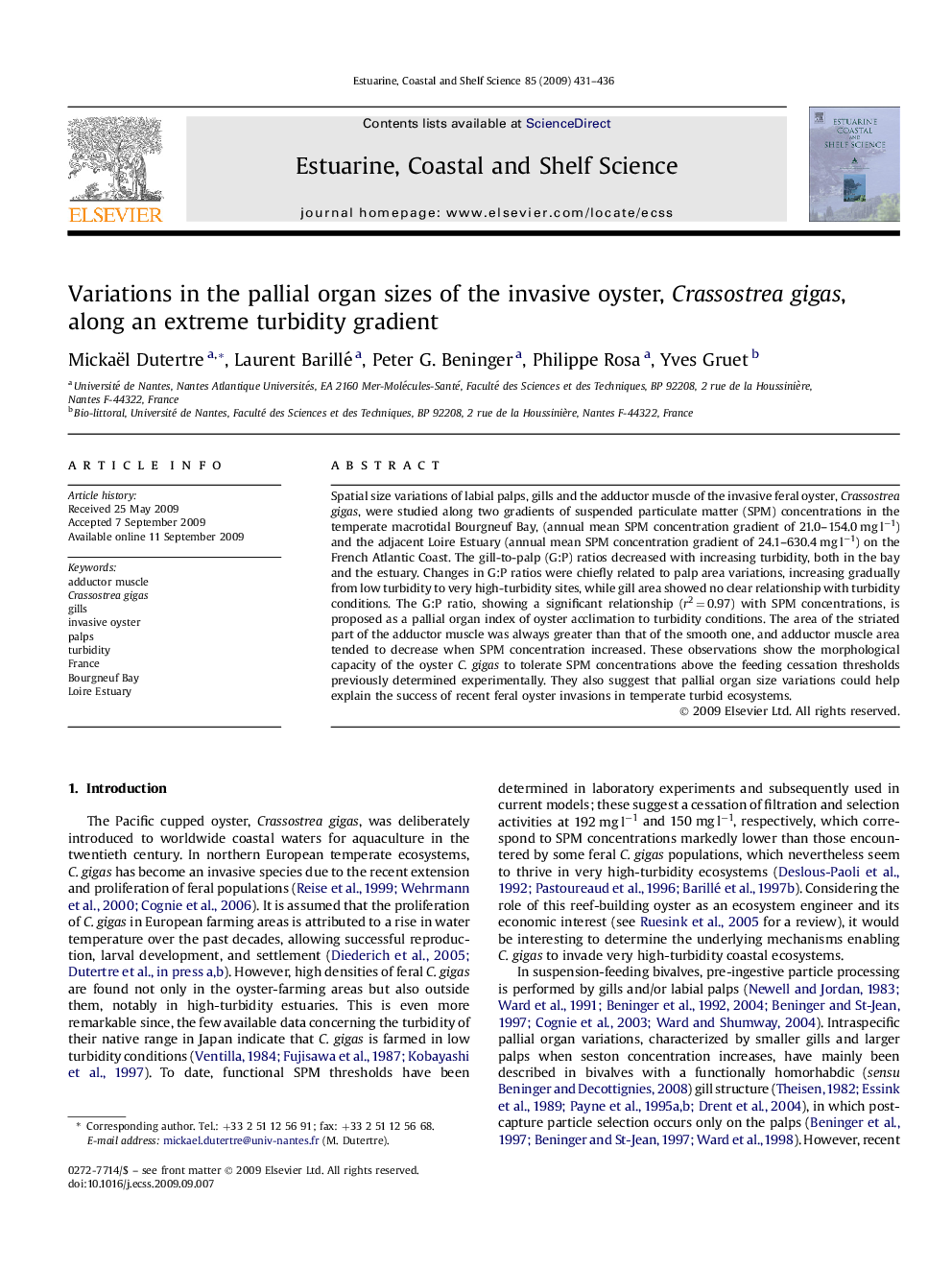| Article ID | Journal | Published Year | Pages | File Type |
|---|---|---|---|---|
| 4540720 | Estuarine, Coastal and Shelf Science | 2009 | 6 Pages |
Spatial size variations of labial palps, gills and the adductor muscle of the invasive feral oyster, Crassostrea gigas, were studied along two gradients of suspended particulate matter (SPM) concentrations in the temperate macrotidal Bourgneuf Bay, (annual mean SPM concentration gradient of 21.0–154.0 mg l−1) and the adjacent Loire Estuary (annual mean SPM concentration gradient of 24.1–630.4 mg l−1) on the French Atlantic Coast. The gill-to-palp (G:P) ratios decreased with increasing turbidity, both in the bay and the estuary. Changes in G:P ratios were chiefly related to palp area variations, increasing gradually from low turbidity to very high-turbidity sites, while gill area showed no clear relationship with turbidity conditions. The G:P ratio, showing a significant relationship (r2 = 0.97) with SPM concentrations, is proposed as a pallial organ index of oyster acclimation to turbidity conditions. The area of the striated part of the adductor muscle was always greater than that of the smooth one, and adductor muscle area tended to decrease when SPM concentration increased. These observations show the morphological capacity of the oyster C. gigas to tolerate SPM concentrations above the feeding cessation thresholds previously determined experimentally. They also suggest that pallial organ size variations could help explain the success of recent feral oyster invasions in temperate turbid ecosystems.
